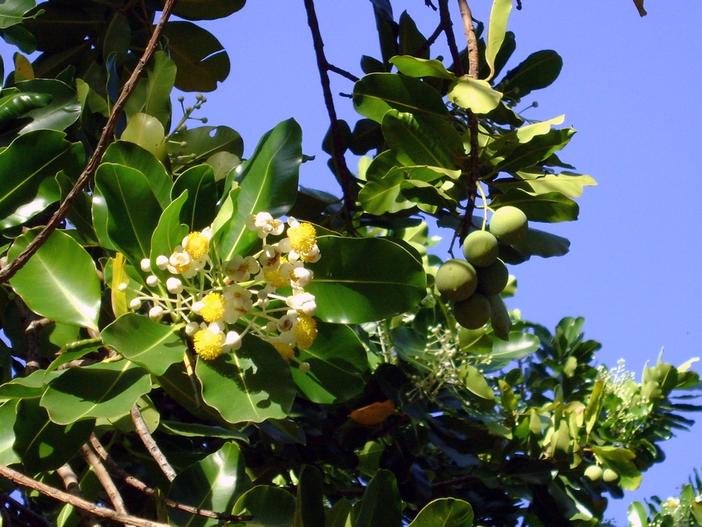Alexandrian Laurel
(Danae racemosa)
Alexandrian Laurel (Danae racemosa)
/
/

Tatters ✾
CC BY 2.0
Image By:
Tatters ✾
Recorded By:
Copyright:
CC BY 2.0
Copyright Notice:
Photo by: Tatters ✾ | License Type: CC BY 2.0 | License URL: https://creativecommons.org/licenses/by/2.0/ | Uploader: Tatters ✾ | Publisher: Flickr

























Estimated Native Range
Summary
Danae racemosa, commonly known as Alexandrian Laurel, is an evergreen shrub native to the understorey of woodlands and forest margins in the Middle East, including Iran and Turkey. It typically grows to about 3-4 feet (0.9-1.2 meters) in height and spreads to a similar width, forming a dense clump of arching stems. The glossy, lance-shaped leaves are a deep green and provide year-round interest. Small, inconspicuous greenish flowers appear in spring, followed by ornamental orange-red berries in the fall, which can persist into winter.
Alexandrian Laurel is valued for its lush foliage and ability to thrive in shaded conditions, making it an excellent choice for understory plantings, shaded borders, or as a low-maintenance ground cover. It is also suitable for urban gardens due to its tolerance of pollution and confined spaces. While it requires minimal watering once established, it prefers well-drained soils rich in organic matter. Alexandrian Laurel is resistant to most pests and diseases, but it can be sensitive to overly wet conditions which may lead to root rot. It is not known to be invasive outside its native range and is recognized for its horticultural merits by the Royal Horticultural Society’s Award of Garden Merit.CC BY-SA 4.0
Alexandrian Laurel is valued for its lush foliage and ability to thrive in shaded conditions, making it an excellent choice for understory plantings, shaded borders, or as a low-maintenance ground cover. It is also suitable for urban gardens due to its tolerance of pollution and confined spaces. While it requires minimal watering once established, it prefers well-drained soils rich in organic matter. Alexandrian Laurel is resistant to most pests and diseases, but it can be sensitive to overly wet conditions which may lead to root rot. It is not known to be invasive outside its native range and is recognized for its horticultural merits by the Royal Horticultural Society’s Award of Garden Merit.CC BY-SA 4.0
Plant Description
- Plant Type: Shrub
- Height: 1-3 feet
- Width: 3-5 feet
- Growth Rate: Slow
- Flower Color: N/A
- Flowering Season: Summer
- Leaf Retention: Evergreen
Growth Requirements
- Sun: Part Shade, Full Shade
- Water: Medium
- Drainage: Medium, Fast
Common Uses
Border Plant, Deer Resistant, Drought Tolerant, Groundcover, Low Maintenance, Rock Garden, Water Garden
Natural Habitat
Understorey of woodlands and forest margins in the Middle East
Other Names
Common Names: Alexandrialager
Scientific Names: , Danae racemosa, Ruscus racemosus, Danae laurus, Danaidia racemosa, Ruscus terminalis,
GBIF Accepted Name: Danae racemosa (L.) Moench